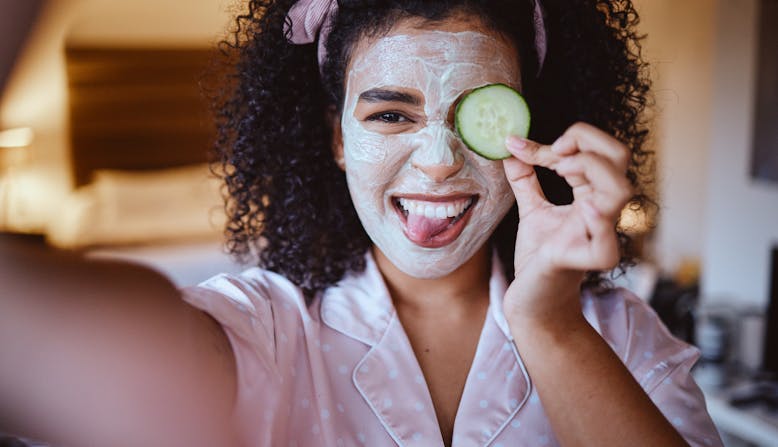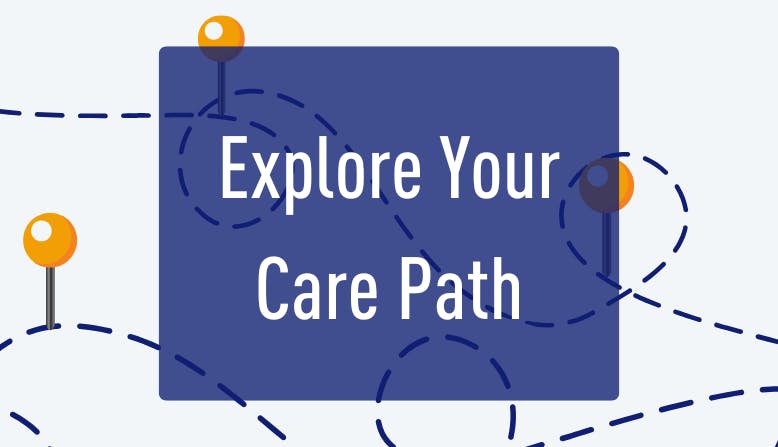In the Ears
Roughly 39% of people living with psoriasis on the face have it in or around their ears. [4] Psoriasis can occur around the ear, behind the ear, and in the ear canal. Symptoms include itch, redness or discoloration, and scaling. Scaling can build up and block the ear canal which may lead to short-term hearing loss. Do not put objects (including your fingers or cotton swabs) into your ear canal to avoid pushing scales further into the ear. If your ear canal becomes blocked, visit an ear, nose, and throat (ENT) specialist for help removing the scales. A dermatologist can help you get a correct diagnosis and work together with an ENT to treat your psoriasis.
In and Around the Mouth
In rare cases, psoriasis can affect the mouth (lips, gums, tongue, and cheek) and normally appears with other skin affected by psoriasis. Symptoms in the mouth include redness, burning, bleeding, and difficulty chewing and swallowing food. If you have symptoms in your mouth, a dentist and a dermatologist can help you get a correct diagnosis and work together to treat your psoriasis.
Around the Eyes
Psoriasis around the eyes is rare but can cause redness or discoloration, dryness, discomfort, and may impair your vision. If you have psoriasis around your eyes, a dermatologist and an ophthalmologist (a doctor who specializes in treating eye diseases) can help you get a correct diagnosis and work together to treat your psoriasis.
It is very important to follow your health care provider’s instructions on how to apply topical treatments around the eye. Overuse of certain topicals around the eye may cause irritation and increase the risk of cataracts (clouding of the eye that makes it hard to see) and glaucoma (a group of eye diseases that damage the optic nerve). [5]
Causes and Triggers
The cause of psoriasis is not fully understood. Psoriasis plaques occur because the overactive immune system speeds up skin cell growth. Normal skin cells completely grow and shed (fall off) in a month. With psoriasis, skin cells do this in only three or four days. Instead of shedding, the skin cells pile up on the surface of the skin.
Inflammation caused by psoriasis can impact other organs and tissues in the body. People with psoriasis may also experience related health conditions. One in three people with psoriasis may also develop psoriatic arthritis. Scalp psoriasis may be an indicator of PsA, as many people have both. If you think you have scalp psoriasis, see a dermatologist to diagnose scalp psoriasis and visit a rheumatologist to screen for psoriatic arthritis.
Psoriasis on the face can be triggered by the same factors as other types of psoriasis. Common psoriasis triggers include:
- Stress
- Certain medications
- Smoking tobacco
- Alcohol
- Injuries or trauma to the skin
- Illness, such as infections
- Changes in weather
- Diet
Learn more about triggers and flares by downloading your free Flare Guide and Symptom Tracker.
Diagnosis
A health care provider will take several factors into consideration when making a diagnosis for psoriasis, including:
- The appearance of the skin. Different types of psoriasis have different appearances.
- The location of psoriasis. Certain types of psoriasis are more common in certain locations.
- Itch of the skin. This is a common symptom of psoriasis.
- A skin biopsy (the removal of a small piece of skin to be looked at under a microscope). A biopsy may also be done to determine if it is psoriasis or another skin condition.


